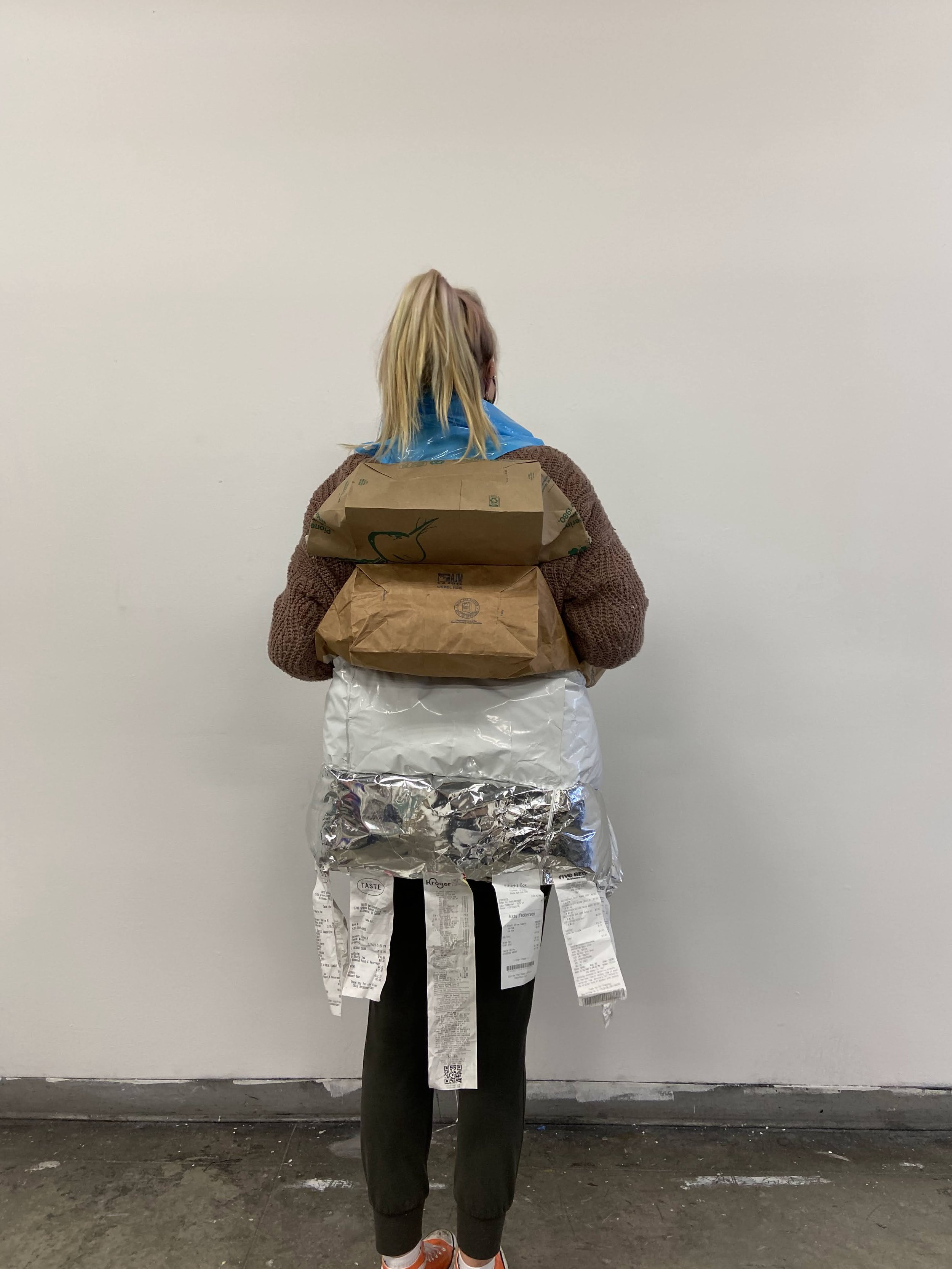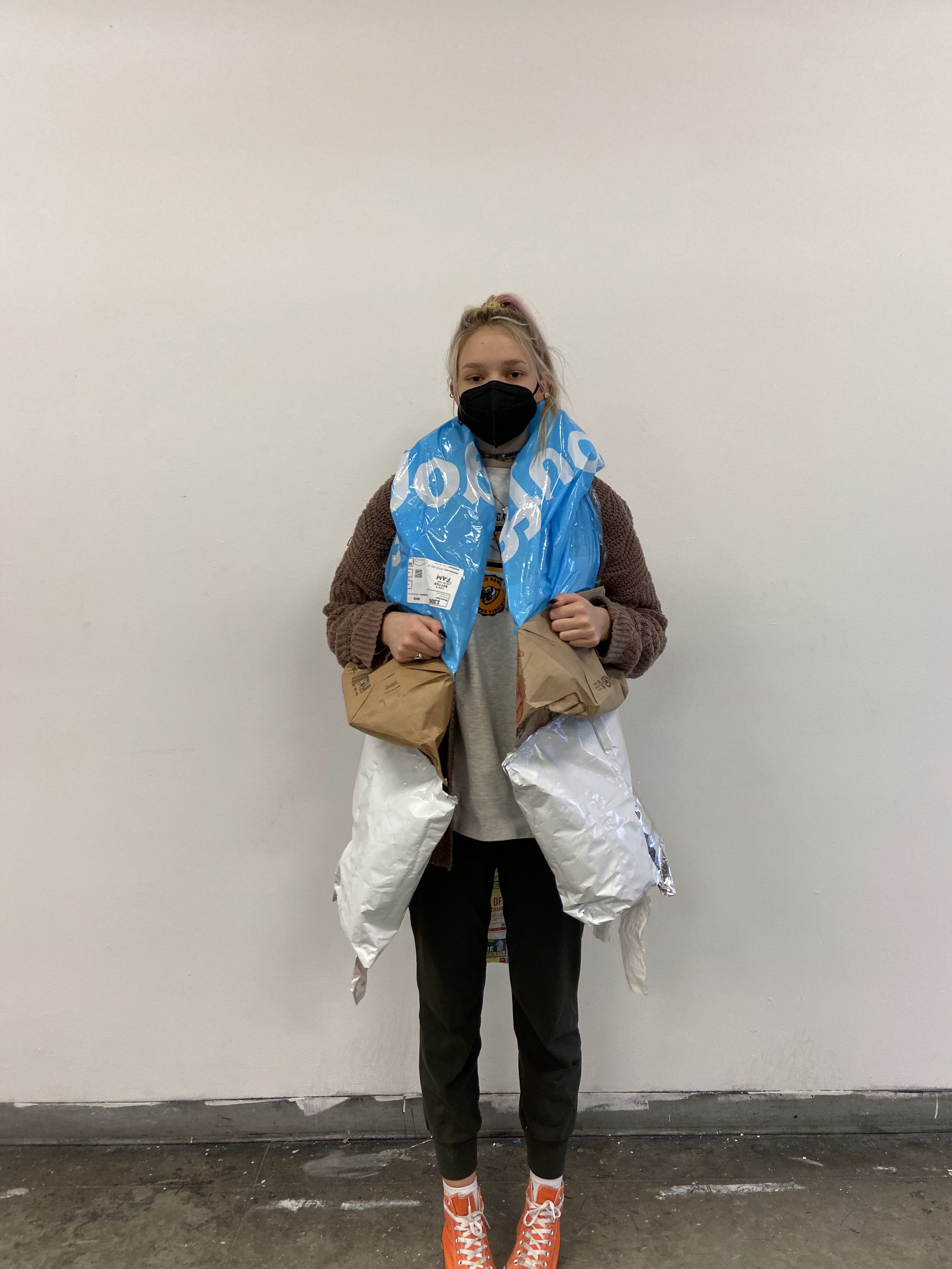
Loud Body:
The Overstimulation Wearable
This project explores the concept of sensory overstimulation through a wearable piece constructed entirely from grocery store materials—plastic bags, noisy wrappers, and disposable packaging. Inspired by the overwhelming environment of a grocery store, where bright colors, clashing sounds, and constant movement compete for attention, the garment translates this experience into something physical. Through texture, structure, and sound, the design turns the body into a living representation of overstimulation, forcing both the wearer and the audience to engage with its chaotic presence.
This was a group project done in collaboration with Kate Feddersen.
Assignment Brief.
The assignment challenged us to create a wearable piece that communicates a specific sensory experience, pushing beyond traditional notions of fashion and aesthetics. The goal was to design something that activates the senses—visually, auditorily, or tactically—while provoking an emotional or physical response. The project encouraged experimentation with unconventional materials and required us to think critically about how garments can extend beyond function and style to become immersive experiences.
Skills.
This project demanded a combination of material manipulation, conceptual thinking, and experiential design. It required an understanding of sensory perception and how different textures, sounds, and structures can influence human interaction. we also applied problem-solving skills to transform everyday, disposable items into something wearable while ensuring that the final piece maintained its intended sensory impact. Additionally, we had to consider movement and performance, as the garment’s effectiveness relied on its ability to generate noise and disrupt personal space dynamically.
Sketching, Building, Refining.
The process began with research into overstimulation and how environments like grocery stores contribute to sensory overload. We collected materials that embodied these experiences—items that were loud, crinkly, and visually cluttered. Experimenting with layering, structure, and attachment methods, we focused on creating a garment that felt overwhelming both in appearance and sensation. Movement became a critical element, so we tested how different materials interacted when worn, ensuring that the act of walking or adjusting the garment would intensify the sensory feedback.
Final Curation.
The completed piece was intrusive, chaotic, and intentionally uncomfortable. Every step created a crinkling sound, reinforcing the idea that overstimulation is inescapable. The textures clashed, the layers felt excessive, and the overall silhouette disrupted natural movement. Rather than being simply observed, the garment demanded to be experienced. In the final critique, the piece sparked discussions about how fashion can act as a medium for storytelling beyond visual appeal. It was an exploration of discomfort, forcing those around it to acknowledge and engage with the concept of overstimulation in a way that was impossible to ignore.




